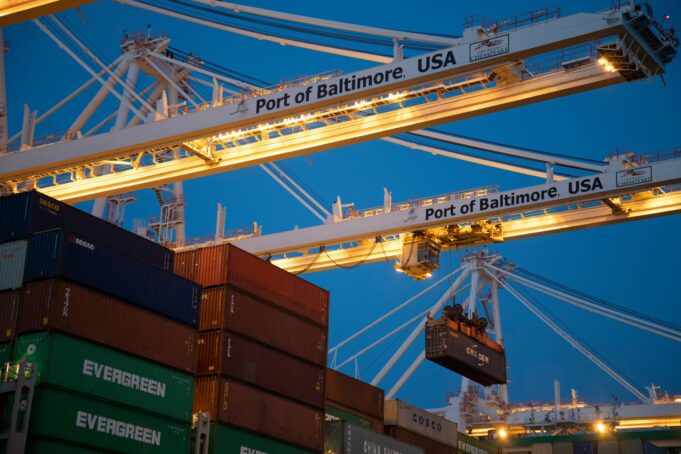Tens of thousands of dock workers, consumers and businesses are breathing a sigh of relief at a new contract between the International Longshoreman Association (ILA) and the United States Maritime Alliance (USMX). After a two-day strike, a joint statement was released.
“The International Longshoremen’s Association and the United States Maritime Alliance, Ltd., have reached a tentative agreement on wages and have agreed to extend the Master Contract until January 15, 2025, to return to the bargaining table to negotiate all other outstanding issues. Effective immediately, all current job actions will cease and all work covered by the Master Contract will resume.”
The union represents about 45,000 dockworkers. This was the first dockworkers strike since 1977 from the Atlantic Coast to the Gulf Coast at 36 ports. Higher wages were at the heart of the dispute.
According to the ILA’s expired contract, ILA dockworkers started at $20 per hour, with pay rising to $24.75 after two years, $31.90 after three, and capping at $39 for those with at least six years on the job.
The ILA wanted a new contract that guarantees a $5 raise each year. Under their proposal, workers would earn $44 per hour in the first year, $49 in the second, and up to $69 by the final year.
USMX responded with a $3-an-hour offer that would have raised pay by nearly 50 percent. The dockworkers rejected that and went on strike, October 1. Dockworkers face real dangers and perilous conditions in their work, including risking injury and death. They also work long hours.
“They might claim it’s a significant increase, but they ignore the fact that many of our members are operating multi-million-dollar container-handling equipment for just $20 an hour. In some states, the minimum wage is already $15,” the ILA said in a statement.
The terms of the new tentative wage agreement were not disclosed in the joint statement.
Also in contention is the ban on automation, full or semi—that replaces jobs or historical work functions. This is a crucial point for the ILA. This was not mentioned in the new contract either.
However, the ILA had previously said in a statement, “We will not accept the loss of work and livelihood for our members due to automation. Our position is clear: the preservation of jobs and historical work functions is non-negotiable.”
Some think automation is a welcomed advance and that technology will save the consumer money. A man who was identified on Facebook as a president of a union of ILA, disagrees.
“When the big three automakers decided to install robotic welders, painters, upholsterers, machinists, assemblers and countless other robots into production with the false pretense and promises that it would ‘remember this quote’ (save the consumer money) well, I ask you this question, did it cut costs of an automobile?
The answer is an Easy NO! In fact, the cost of the standard car went up to pay for the robots and them being installed and thousands of workers were left jobless!”
The dockworkers also pointed out the record profits the shipping industry has made over the past few years, particularly during the Covid-19 pandemic.
“Shippers have made record profits since the pandemic, and, in some cases, have seen profits grow in excess of 800%,” White House press secretary Karine Jean-Pierre said, referring to a boom in shipping demand since the Covid-19 pandemic, Reuters reported Oct. 1
”It’s only fair that workers who put themselves at risk during the pandemic to keep ports open see a meaningful increase in their wages, as well,” reported reuters.com, quoting Ms. Jean-Pierre.
Nervous consumers and businesses around the country were concerned about shortages and rising prices. The strike halted the delivery of products from auto parts to tomatoes.
Forbes estimated that a prolonged strike would have cost the economy an estimated $5 billion a day as imports and exports are stopped. Reuters reported that big-name retailers, such as Walmart and Costco, paid more to implement backup plans, bringing in holiday merchandise early to avoid strike-related disruptions.
According to the American Farm Bureau, if the strike had continued, delays, shortages, and potential price increases would have impacted a wide array of everyday items. A majority of various food items that arrive by sea are unloaded from shipping containers at these harbors:
approximately 90 percent of cherry imports, 85 percent of canned goods, 82 percent of spicy peppers, and 80 percent of chocolate products. These items are transported via maritime vessels and processed through these port facilities.













